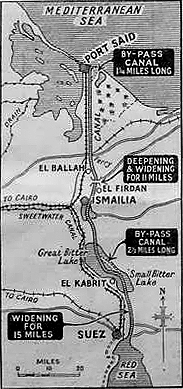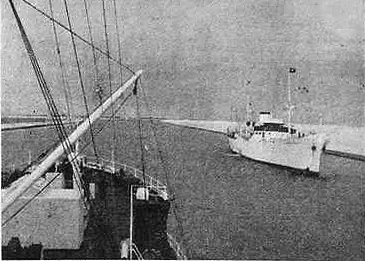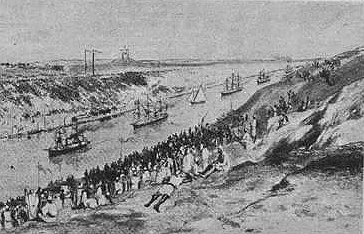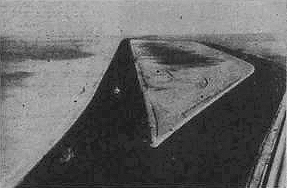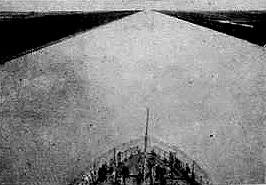The canal people not only kept what they had won
from sand, but went on winning more. Since the opening of the canal,
widening and deepening operations have involved more than twice as
much work as the original cutting.
At the
beginning of the Second World War the canal was defenceless. Enemy
aircraft flew up and down, machine gunning and dropping bombs and
mines as they pleased. Then the Allies brought guns, lighters and
searchlights to the scene. Balloons were moored, and the battle to
close the Suez Canal was on. But in spite of severe damage, navigation
was only held up for a total period of 76 days.
During
86 years of maintaining and enlarging one of the world’s most
important trade links, the Suez Canal Company has also changed the
face of the desert. Everywhere near the great waterway one sees gardens,
public parks, fine avenues; for the company has ever been concerned
for the welfare of its small army of employees.
It has
built more than 1400 dwellings for them, surrounded by trees and gardens.
There are social and sports clubs, playing fields and golf links where
formerly stretched only the sandy, blighted desert. There are hospitals,
clinics and welfare centres supervised by a surgeon and 19 doctors.
Now the
greatest improvements in the canal’s history are being started
despite the fact that in 14 years time the Company’s concession
expires. Then the canal will be handed over, free, to Egypt
